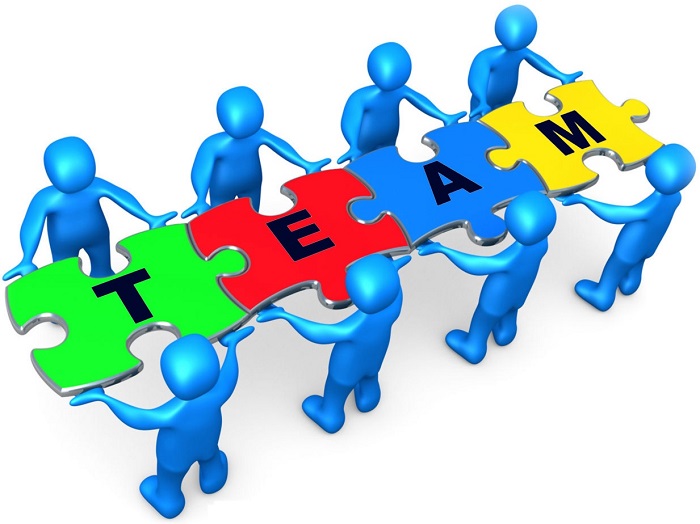There are two basic ways in which work is organized. The first relates to the flow of authority and is known as organizational structure of merely organization. The second relates to the flow of work itself from one operation to another and is known as procedure. Other names are “method,” “system,” and “work flow.” People usually recognize the human side or organizational structure because of the superior-subordinate relationship that it establishes, but more often than not they ignore or overlook the human side of work flow. They see work flow as an engineering factor that is separate from human factors. In the usual case, however, work flow has many behavioral effects because it sets people in interaction as they perform their work. Initiation of Action: One important point about a work system is that it determines who will “initiate” an activity and who will “receive” it. At each step inContinue reading
Abey Francis
Job Enrichment – Motivation by Enriching Jobs
Fredrick Herzberg gave greater emphasis on job enrichment in his two factor theory. He assumed that in order to motivate personnel, the job must be designed to provide opportunities for achievement, recognition, responsibility, advancement and growth. This technique entails enriching the job so that these factors are included. It simply means, adding a few more motivators to job to make it more rewarding. A job is enriched when the nature of the job is made more exciting, challenging and creative or gives the job holder more decision making, planning and controlling powers. According to Beatty and Schneider, “Job enrichment is a motivational technique which emphasizes the need for challenging and interesting and interesting work. It suggests that jobs be redesigned so that intrinsic satisfaction is derived from doing the job. In its best applications, it leads to a vertically enhanced job by adding functions from other organizational levels, making itContinue reading
Quality of Work Life (QWL)
The term Quality of Work Life (QWL) aims at changing the entire organizational climate by humanizing work, individualizing organizations and changing the structural and managerial systems. It takes into consideration the socio-psychological needs of the employees. It seeks to create such a culture of work commitment in the organizations which will ensure higher productivity and greater job satisfaction for the employees. Quality of work life refers to the favorableness or unfavorableness of the job environment of an organization for its employees. It is generic term which covers a person’s feelings about every dimension of his work e.g. economic incentives and rewards, job security, working conditions, organizational and interpersonal relationships etc. The term QWL has different meanings for different people. A few important definitions of Quality of Work Life (QWL) are as follows: According to Harrison: “Quality of Work Life is the degree to which work in an organization contributes toContinue reading
Intergroup Interventions in Organizational Development
Inter-group team building intervention intends to increase communications and interactions between work related groups to reduce the amount of dysfunctional competition and to replace a parochial independent point of view with an awareness of the necessity for interdependence of action calling on the best efforts of both the groups. Inter-group interventions are integrated into Organizational Development programs to facilitate cooperation and efficiency between different groups within an organization. For instance, departmental interaction often deteriorates in larger organizations as different divisions battle for limited resources or become detached from the needs of other departments. Conflict resolution meetings are one common inter-group intervention. First, different group leaders are brought together to get their commitment to the intervention. Next, the teams meet separately to make a list of their feelings about the other group(s). Then the groups meet and share their lists. Finally, the teams meet to discuss the problems and to tryContinue reading
Organizational Innovation
Organizational Innovation is a process of receiving and using new ideas to satisfy the stakeholders of an organization. It is the conversion of new knowledge into new products and services. Organizational Innovation is about creating value and increasing efficiency, and therefore growing business. It is a spark that keeps organizations and people moving ever onward and upward. “Without innovation, new products, new services, and new ways of doing business would never emerge, and most organizations would be forever stuck doing the same old things the same old way. “Innovation here is defined broadly, to include both improvements in technology and better methods or ways of doing things. It can be manifested in product changes, process changes, new approaches to marketing, new forms of distribution, and new conceptions of scope.” (Porter, 1990, p. 45) The term organizational innovations covers a wide spectrum of innovations; for example, it can mean innovations inContinue reading
Organizational Development through Team Building
There are a variety of situations where new teams are formed. The project based, cross-functional work team has become the basis of industry in the 1990’s. Virtual team organization is rapidly becoming the model for flexibility and agility in organizing quickly and effectively to get jobs done. New teams usually have a clear task focus in the early going and there is usually a clear understanding of the short term goals. The new team members are also generally technically competent and there usually is a challenge in the project that will draw on their technical capabilities. While the early activities of a team are clearly focused on task and work issues, relationship problems tend do develop as they do in any human system. By the time these interpersonal issues surface the team may be well along in its activities. The issues may become very difficult and very costly to workContinue reading

